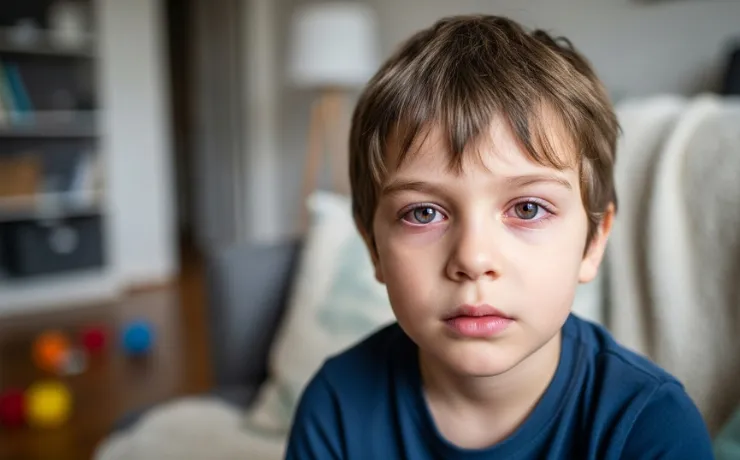Recognizing and Managing Pink Eye in Children

Pink eye, or conjunctivitis, is a common eye condition in children. It occurs when the conjunctiva—the thin, clear tissue covering the white part of the eye—becomes inflamed. While pink eye is often mild, it can be uncomfortable and contagious. Understanding how to recognize and manage it is important for children’s health and school attendance.
At Farmington Drugs, we provide guidance on identifying pink eye, safe management strategies, and over-the-counter (OTC) options to relieve symptoms.
Causes of Pink Eye in Children
Pink eye can be caused by several factors:
-
Viral infections: The most common cause, often linked to colds or other respiratory infections
-
Bacterial infections: Can cause yellow or green discharge and may require medical attention
-
Allergies: Often seasonal, causing itchy, watery, or red eyes without discharge
-
Irritants: Exposure to smoke, chlorine, or foreign objects
Identifying the cause helps determine the appropriate management and treatment.
Recognizing Pink Eye Symptoms
Common signs in children include:
-
Red or pink appearance in one or both eyes
-
Itching or burning sensation
-
Tearing or watery eyes
-
Discharge: Clear for viral or allergic pink eye, thicker and yellow/green for bacterial
-
Swelling of eyelids
-
Crusting on eyelashes, especially in the morning
-
Sensitivity to light or eye discomfort
Monitoring these symptoms helps parents know when home care is appropriate and when to seek medical attention.
Over-the-Counter Treatments
OTC products can provide relief for mild or non-bacterial pink eye:
1. Lubricating Eye Drops (Artificial Tears)
-
How they work: Moisturize eyes, flush out irritants, and reduce redness and dryness
-
Best for: Viral or allergic pink eye, or irritation from environmental factors
-
Tips: Apply drops as directed and avoid touching the dropper to the eye
2. Antihistamine Eye Drops
-
How they work: Reduce allergic reactions causing redness, itching, and swelling
-
Best for: Seasonal or environmental allergies
-
Tips: Follow instructions for age-appropriate dosing
3. Cold Compresses
-
How they work: Reduce swelling, redness, and discomfort
-
Best for: Irritation or mild allergic conjunctivitis
-
Tips: Use a clean, damp cloth for 5–10 minutes several times a day
Home Care Strategies
In addition to OTC treatments, parents can support recovery with safe home care:
-
Practice good hygiene: Wash hands frequently and avoid touching the eyes
-
Separate personal items: Towels, pillows, and washcloths should not be shared
-
Clean discharge carefully: Use a clean tissue or cotton ball for each wipe
-
Limit exposure to irritants: Avoid smoke, pool chlorine, or dust during recovery
-
Encourage rest: Reduces eye strain and supports immune response
When to Seek Medical Attention
While many cases of pink eye resolve with OTC care, see a healthcare provider if your child experiences:
-
Severe pain or blurred vision
-
Thick yellow or green discharge
-
Swelling around the eye that worsens
-
Symptoms lasting more than a few days without improvement
-
Fever, headache, or other signs of infection
Prompt evaluation ensures proper treatment, particularly if antibiotics or prescription drops are needed.
Preventing Pink Eye
Prevention strategies are key to reducing recurrence and spread:
-
Teach hand hygiene: Encourage frequent handwashing
-
Avoid touching eyes: Remind children not to rub eyes with dirty hands
-
Disinfect surfaces: Toys, doorknobs, and electronic devices should be cleaned regularly
-
Replace or clean eye items: Towels, pillows, or makeup applicators can harbor bacteria or viruses
-
Monitor allergy triggers: Reduce exposure to pollen, pet dander, or dust when possible
The Role of Your Pharmacist
Pharmacists can help parents manage pink eye safely:
-
Recommend age-appropriate OTC eye drops for symptom relief
-
Provide guidance on safe application and dosing
-
Identify warning signs that require referral to a healthcare provider
-
Educate on hygiene and prevention strategies to reduce spread
-
Advise on managing recurring or chronic eye irritation
At Farmington Drugs, our pharmacists are available to answer questions, provide guidance, and ensure safe, effective care for children with pink eye.
Safety Tips for OTC Eye Care
-
Always follow label instructions and age recommendations
-
Do not share eye drops or applicators between children
-
Avoid using combination products unless recommended by a pharmacist
-
Keep track of symptoms and improvements to inform healthcare visits
-
Store eye care products safely and replace them as directed
Final Thoughts
Pink eye in children is common but manageable with early recognition, OTC treatments, home care, and pharmacist guidance. Understanding the cause, taking preventive measures, and monitoring symptoms can reduce discomfort and prevent spread to others.
At Farmington Drugs, our pharmacists provide expert advice, recommend safe OTC solutions, and guide parents on proper hygiene and eye care. With the right approach, children can recover comfortably while minimizing complications and protecting their vision.





